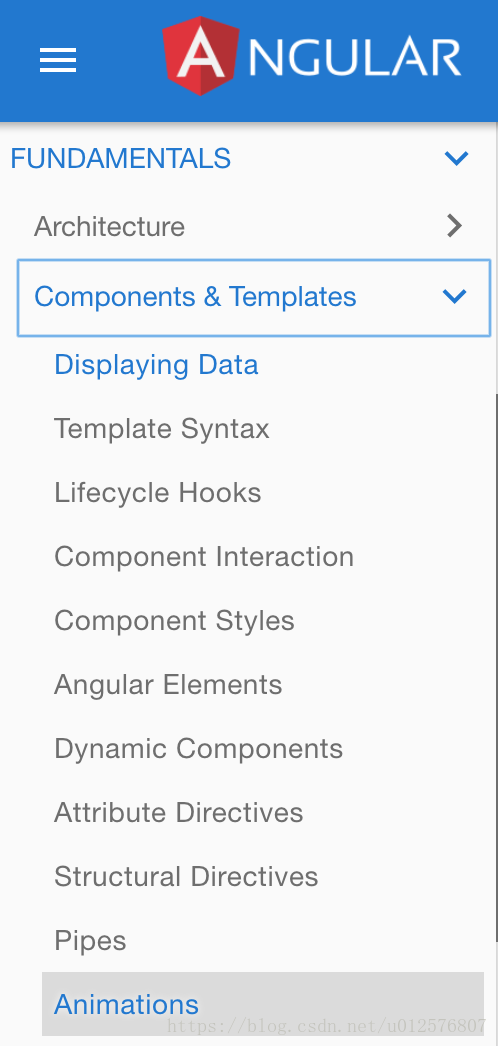
Angular官方文档学习笔记第2篇_数据绑定_模板语法
Displaying Data
You can display data by
binding controls in an HTML template
to properties of an Angular component.
In this page, you'll create a component with a list of girls.
You'll display the list of girl names
and conditionally show a message below the list.
The final UI looks like this:
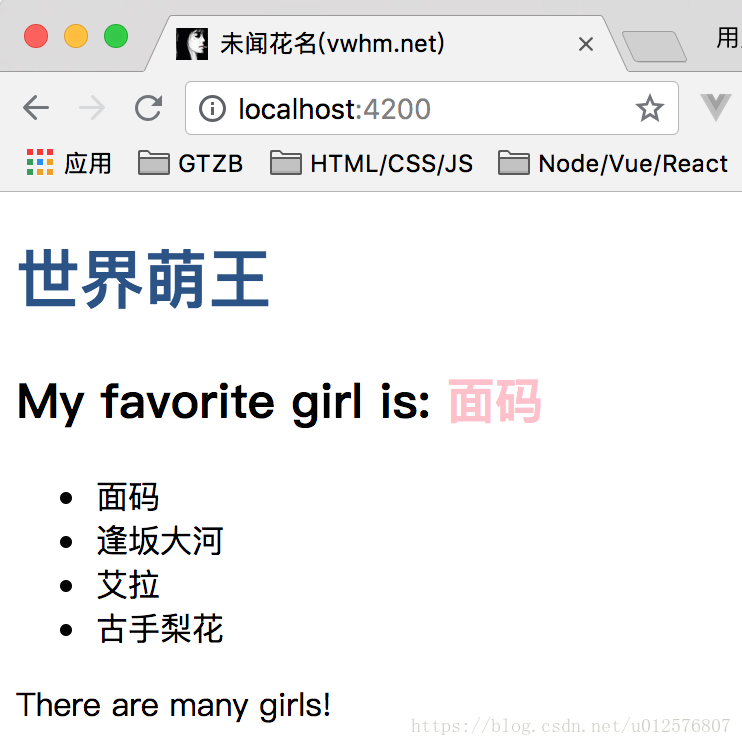
The live example / download example demonstrates all of the syntax and code snippets described in this page.
Showing component properties with interpolation
The easiest way to display a component property
is to bind the property name through interpolation.
With interpolation, you put the property name in the view template,
enclosed in double curly braces: {{myGirl}}.
Follow the quickstart instructions for creating a new project named displaying-data.
ng create displaying-data
如图所示:(可能要花几分钟)
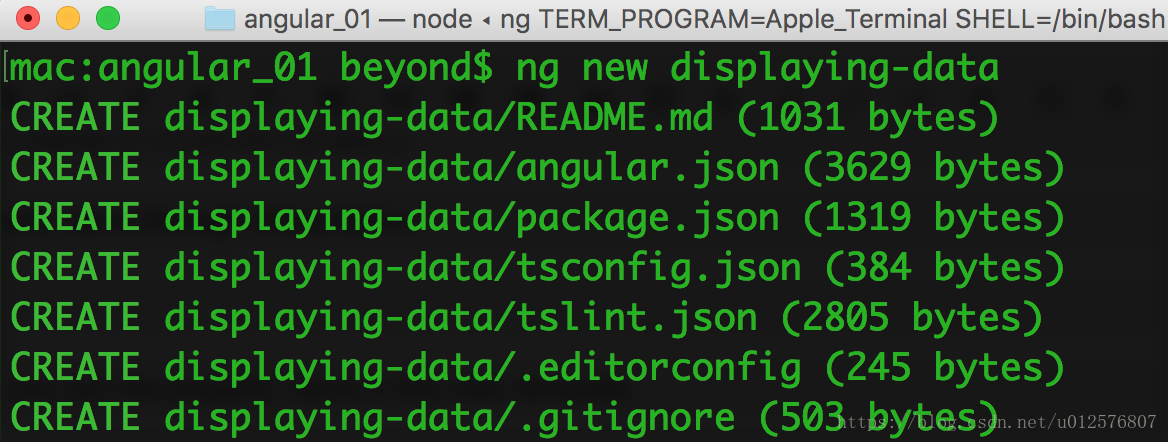

然后cd displaying-data
执行ng serve启动项目
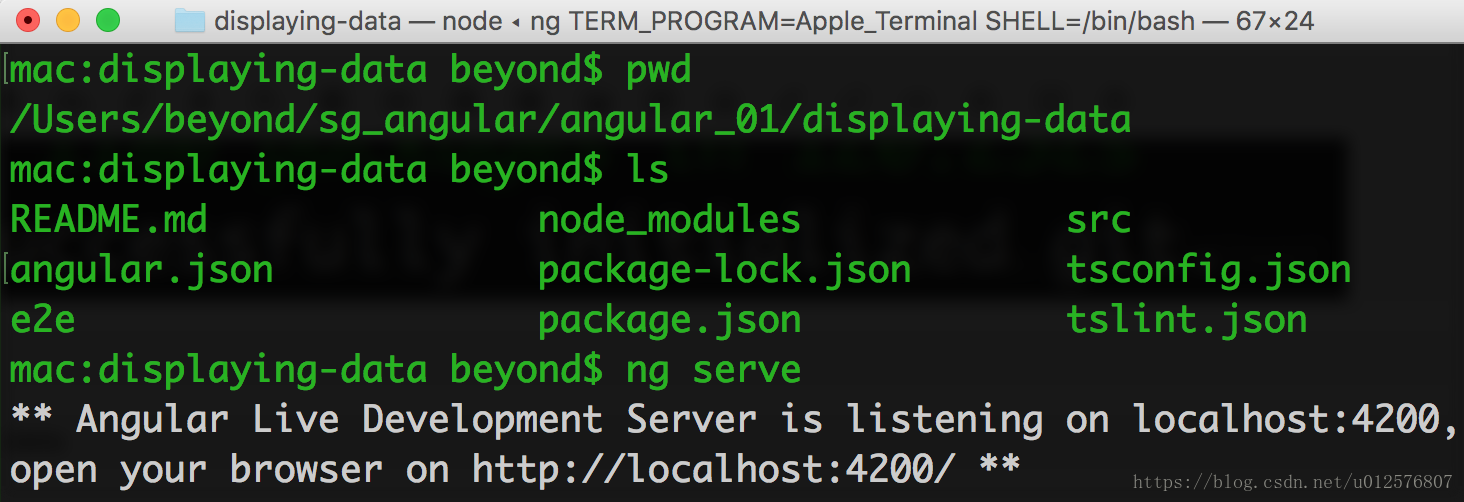
打开浏览器http://localhost:4200可以访问项目的首页
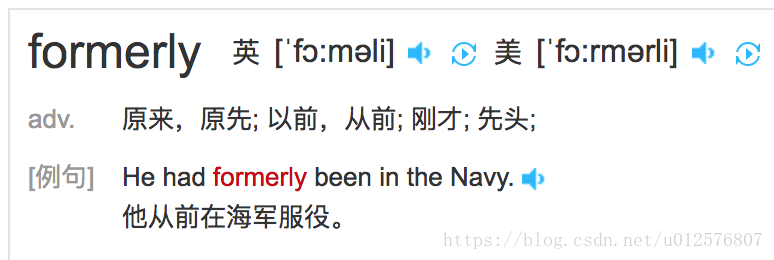
Delete the app.component.html file. It is not needed for this example.
Then modify the app.component.ts file
by changing the template and the body of the component.
意思就是: 去掉templateUrl: './app.component.html'
换成
template: `<h1>未闻花名</h1>`
When you're done, it should look like this:
src/app/app.component.ts- import { Component } from '@angular/core';
- @Component({
- selector: 'app-root',
- template: `
- <h1>{{title}}</h1>
- <h2>My favorite girl is: {{myGirl}}</h2>
- `
- })
- export class AppComponent {
- title = '未闻花名';
- myGirl = '面码';
- }
You added two properties to the formerly ( 之前 ) empty component: title and myHero.
The template displays the two component properties using double curly brace interpolation:
src/app/app.component.ts (template)template: `
<h1>{{title}}</h1>
<h2>My favorite girl is: {{myGirl}}</h2>
`The template is a multi-line string within ECMAScript 2015 backticks (`).
The backtick (`)—which is not the same character as a single quote (')—
allows you to compose a string over several lines, which makes the HTML more readable.

Angular automatically pulls the value of the title and myHero properties from the component
and inserts those values into the browser.
Angular 自动 updates the display when these properties change.
More precisely, the redisplay occurs after some kind of asynchronous event related to the view,
such as a keystroke,
a timer completion,
or a response to an HTTP request.
Notice that you don't call new to create an instance of the AppComponent class.
Angular is creating an instance for you. How?
The CSS selector in the @Component decorator specifies an element named <app-root>.
That element is a placeholder in the body of your index.html file:
<body>
<app-root></app-root>
</body>When you bootstrap with the AppComponent class (in main.ts),
Angular looks for a <app-root> in the index.html,
finds it, instantiates an instance of AppComponent,
and renders it inside the <app-root> tag.
Now run the app. It should display the title and hero name:
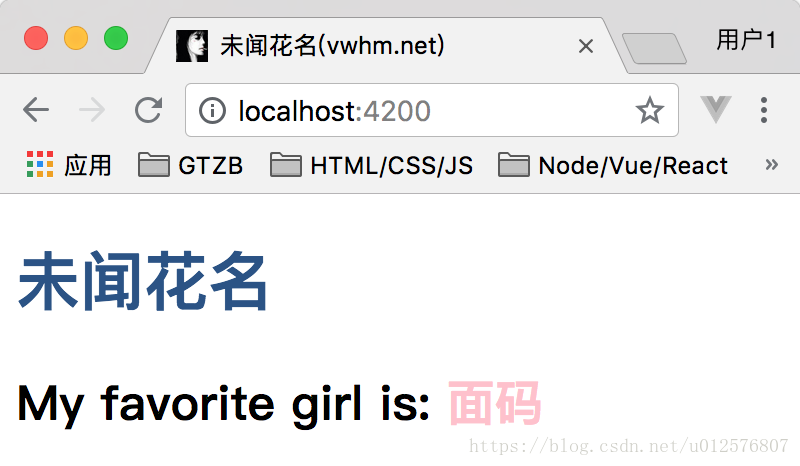
The next few sections review some of the coding choices in the app.
这句话什么意思???
Template inline or template file?
You can store your component's template in one of two places.
You can define it inline using the template property,
or you can define the template in a separate HTML file
and link to it in the component metadata using the @Component decorator's templateUrl property.
The choice between inline and separate HTML is a matter of taste, circumstances, and organization policy.
Here the app uses inline HTML because the template is small and the demo is simpler without the additional HTML file.
In either style, the template data bindings have the same access to the component's properties.
什么意思???
-it 表示的是使用内联模板
inline template的缩写
ng generate component hero -itConstructor or variable initialization?
Although this example uses variable assignment to initialize the components,
you could instead declare and initialize the properties using a constructor:
export class AppCtorComponent {
title: string;
myGirl: string;
constructor() {
this.title = '未闻花名';
this.myGirl = '面码';
}
}This app uses more terse ( 简短的 ) "variable assignment" style simply for brevity.
Showing an array property with *ngFor
To display a list of heroes,
begin by adding an array of hero names to the component
and redefine myHero to be the first name in the array.
export class AppComponent {
title = '世界萌王';
heroes = ['面码', '逢坂大河', '艾拉', '古手梨花'];
myHero = this.heroes[0];
}Now use the Angular ngFor directive in the template
to display each item in the heroes list.
template: `
<h1>{{title}}</h1>
<h2>My favorite hero is: {{myHero}}</h2>
<p>Heroes:</p>
<ul>
<li *ngFor="let hero of heroes">
{{ hero }}
</li>
</ul>
`This UI uses the HTML unordered list with <ul> and <li> tags.
The *ngFor in the <li> element is the Angular "repeater" directive.
It marks that <li> element (and its children) as the "repeater template":
<li *ngFor="let hero of heroes">
{{ hero }}
</li>Don't forget the leading asterisk (*) in *ngFor.
It is an essential part of the syntax.
For more information, see the Template Syntax page.
Notice the hero in the ngFor double-quoted instruction;
it is an example of a template input variable.
Read more about template input variables in the microsyntax ( 微语法 ) section of the Template Syntax page.
Angular duplicates the <li> for each item in the list,
setting the hero variable to the item (the hero) in the current iteration.
Angular uses that variable as the context for the interpolation in the double curly braces.
In this case, ngFor is displaying an array,
but ngFor can repeat items for any iterable object.
Now the girls appear in an unordered list.
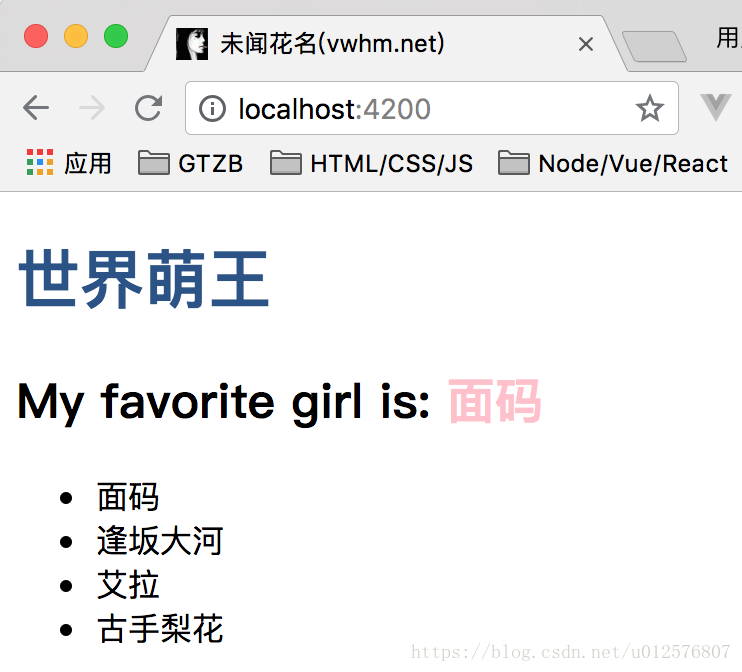
Creating a class for the data
The app's code defines the data directly inside the component,
which isn't best practice.
In a simple demo, however, it's fine.
At the moment, the binding is to an array of strings.
In real applications, most bindings are to more specialized objects.
To convert this binding to use specialized objects,
turn the array of hero names into an array of Hero objects.
For that you'll need a Girl class:
ng generate class girl
With the following code:
src/app/hero.tsexport class Hero {
constructor(
public id: number,
public name: string) { }
}You've defined a class with a constructor and two properties: id and name.
It might not look like the class has properties, but it does.
The declaration of the constructor parameters takes advantage of a TypeScript shortcut.
Consider the first parameter:
src/app/hero.ts (id)public id: number,That brief syntax does a lot:
- Declares a constructor parameter and its type.
- Declares a public property of the same name.
- Initializes that property with the corresponding argument when creating an instance of the class.
Using the Hero class
After importing the Hero class, the AppComponent.heroes property can return a typed array of Hero objects:
heroes = [
new Hero(1, 'Windstorm'),
new Hero(13, 'Bombasto'),
new Hero(15, 'Magneta'),
new Hero(20, 'Tornado')
];
myHero = this.heroes[0];Next, update the template.
At the moment it displays the hero's id and name.
Fix that to display only the hero's name property.
template: `
<h1>{{title}}</h1>
<h2>My favorite hero is: {{myHero.name}}</h2>
<p>Heroes:</p>
<ul>
<li *ngFor="let hero of heroes">
{{ hero.name }}
</li>
</ul>
`The display looks the same, but the code is clearer.
Conditional display with NgIf
Sometimes an app needs to display a view or a portion of a view only under specific circumstances.
Let's change the example to display a message if there are more than three heroes.
The Angular ngIf directive inserts or removes an element based on a truthy/falsy condition.
To see it in action, add the following paragraph at the bottom of the template:
src/app/app.component.ts (message)<p *ngIf="heroes.length > 3">There are many heroes!</p>Don't forget the leading asterisk (*) in *ngIf.
It is an essential part of the syntax.
Read more about ngIf and *in the ngIf section of the Template Syntax page.
The template expression inside the double quotes,
*ngIf="heroes.length > 3", looks and behaves much like TypeScript.
When the component's list of heroes has more than three items,
Angular adds the paragraph to the DOM and the message appears.
If there are three or fewer items,
Angular omits the paragraph, so no message appears.
For more information, see the template expressions section of the Template Syntax page.
Angular isn't showing and hiding the message.
划重点! Vue中指令有v-show和v-if
It is adding and removing the paragraph element from the DOM.
That improves performance, especially in larger projects
when conditionally including or excluding big chunks of HTML with many data bindings.
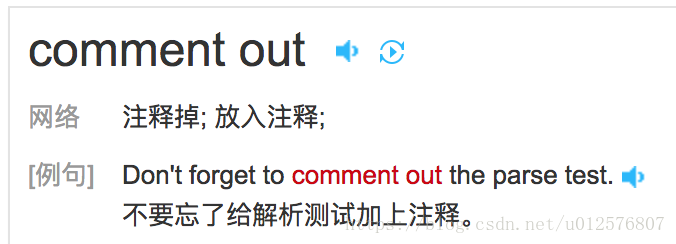
Try it out.
Because the array has four items, the message should appear.
Go back into app.component.ts and delete or comment out one of the elements from the hero array.
The browser should refresh automatically and the message should disappear.
Summary
Now you know how to use:
- Interpolation with double curly braces to display a component property.
- ngFor to display an array of items.
- A TypeScript class to shape the model data for your component and display properties of that model.
- ngIf to conditionally display a chunk of HTML based on a boolean expression.
Here's the final code:
Model 类 girl.ts
export class Girl {
constructor(public id: number, public name: string){}
}
App Module ts文件
import { BrowserModule } from '@angular/platform-browser';
import { NgModule } from '@angular/core';
import { AppComponent } from './app.component';
@NgModule({
declarations: [
AppComponent
],
imports: [
BrowserModule
],
providers: [],
bootstrap: [AppComponent]
})
export class AppModule { }
App Component ts文件
import { Component } from '@angular/core';
import { Girl } from './girl'
@Component({
selector: 'app-root',
template: `
<h1>{{title}}</h1>
<h2>My favorite girl is: <span class="class_span_girlName">{{firstGirl.name}}</span></h2>
<ul>
<li *ngFor="let girl of girls">
{{ girl.name }}
</li>
</ul>
<p *ngIf="girls.length > 3">
There are many girls!
</p>
`,
styleUrls: ['./app.component.css']
})
export class AppComponent {
// title: string
// girlName: string
title = '世界萌王'
girls = [
new Girl(1,'面码'),
new Girl(2,'逢坂大河'),
new Girl(3,'艾拉'),
new Girl(4,'古手梨花')
]
// 必须使用this
firstGirl = this.girls[0]
constructor(){
// this.title = '未闻花名';
// this.girlName = '面码';
}
}效果如下:


Template Syntax
The Angular application manages what the user sees and can do,
achieving this through the interaction of a component class instance (the component) and its user-facing template.
You may be familiar with the component/template duality
from your experience with model-view-controller (MVC)
or model-view-viewmodel (MVVM).
In Angular, the component plays the part of the controller/viewmodel ( ViewModel 驱动视图的数据 ),
and the template represents the view.
This page is a comprehensive technical reference to the Angular template language.
It explains basic principles of the template language
and describes most of the syntax that you'll encounter elsewhere in the documentation.
Many code snippets illustrate the points and concepts,
all of them available in the Template Syntax Live Code / download example.
HTML in templates
HTML is the language of the Angular template.
Almost all HTML syntax is valid template syntax.
The <script> element is a notable exception;
it is forbidden, eliminating the risk of script injection attacks.
In practice, <script> is ignored and a warning appears in the browser console.
See the Security page for details.
Some legal HTML doesn't make much sense in a template.
The <html>, <body>, and <base> elements have no useful role.
Pretty much everything else is fair game. 什么意思???
You can extend the HTML vocabulary of your templates
with components and directives that appear as new elements and attributes.
In the following sections, you'll learn
how to get and set DOM (Document Object Model) values dynamically through data binding.
Begin with the first form of data binding
—interpolation—to see how much richer template HTML can be.
Interpolation ( {{...}} )
You met the double-curly braces of interpolation, {{ and }}, early in your Angular education.
<p>My current girl is {{currentGirl.name}}</p>You use interpolation to weave calculated strings into the text
between HTML element tags and within attribute assignments.
src/app/app.component.html
<h3>
{{title}}
<img src="{{heroImageUrl}}" style="height:30px">
</h3>The text between the braces is often the name of a component property.
Angular replaces that name with the string value of the corresponding component property.
In the example above, Angular evaluates the title and heroImageUrl properties and "fills in the blanks",
first displaying a bold application title and then a heroic image.
More generally, the text between the braces is a template expression
that Angular first evaluates and then converts to a string.
The following interpolation illustrates the point by adding the two numbers:
src/app/app.component.html<!-- "The sum of 1 + 1 is 2" -->
<p>The sum of 1 + 1 is {{1 + 1}}</p>The expression can invoke methods of the host component such as getVal(), seen here:
<!-- "The sum of 1 + 1 is not 4" -->
<p>The sum of 1 + 1 is not {{1 + 1 + getVal()}}</p>Angular evaluates all expressions in double curly braces,
converts the expression results to strings,
and links them with neighboring literal strings.
Finally, it assigns this composite interpolated result to an element or directive property.
You appear to be inserting the result between element tags and assigning it to attributes.
It's convenient to think so, and you rarely suffer for this mistake.
Though this is not exactly true.
Interpolation is a special syntax that Angular converts into a property binding, as is explained below.
But first, let's take a closer look at template expressions and statements.
Template expressions
A template expression produces a value.
Angular executes the expression and assigns it to a property of a binding target;
the target might be an HTML element, a component, or a directive.
The interpolation braces in {{1 + 1}} surround the template expression 1 + 1.
In the property binding section below,
a template expression appears in quotes to the right of the = symbol as in [property]="expression".
You write these template expressions in a language that looks like JavaScript.
Many JavaScript expressions are legal template expressions, but not all.
JavaScript expressions that have or promote side effects are prohibited, including:
- assignments (
=,+=,-=, ...) new- chaining expressions with
;or, - increment and decrement operators (
++and--)
Other notable differences from JavaScript syntax include:
- no support for the bitwise operators
|and& - new template expression operators, such as
|,?.and!.
Expression context
The expression context is typically the component instance.
In the following snippets, the title within double-curly braces
and the isUnchanged in quotes refer to properties of the AppComponent.
{{title}}
<span [hidden]="isUnchanged">changed</span>An expression may also refer to properties of the template's context
such as a template input variable (let hero) or a template reference variable (#heroInput).
src/app/app.component.html
<div *ngFor="let hero of heroes">{{hero.name}}</div>
<input #heroInput> {{heroInput.value}}The context for terms in an expression is a blend of
1. the template variables,
2. the directive's context object (if it has one),
3. and the component's members.
下面说说命名冲突的优先级:
If you reference a name that belongs to more than one of these namespaces,
1. the template variable name takes precedence 优先,
2. followed by a name in the directive's context, 其次
3. and, lastly, the component's member names. 最后
The previous example presents such a name collision.
The component has a hero property and the *ngFor defines a hero template variable.
The hero in {{hero.name}} refers to the template input variable, not the component's property.
Template expressions cannot refer to anything in the global namespace (except undefined).
They can't refer to window or document.
They can't call console.log or Math.max.
They are restricted to referencing members of the expression context.
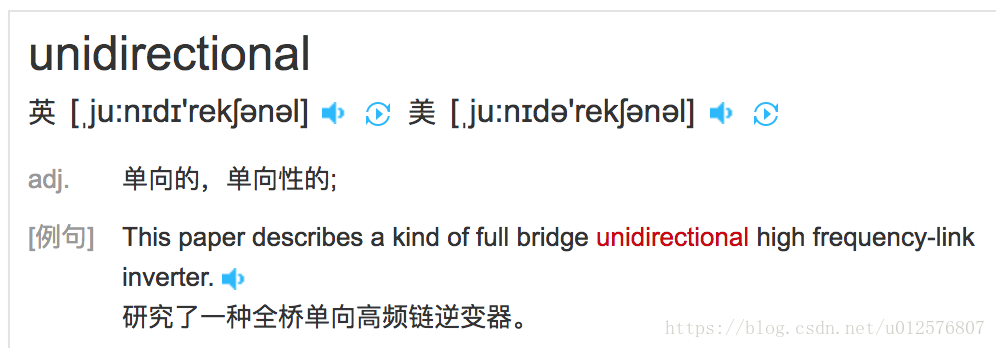
Expression guidelines
Template expressions can make or break an application.
Please follow these guidelines:
- No visible side effects
- Quick execution
- Simplicity
- Idempotence
The only exceptions to these guidelines should be in specific circumstances that you thoroughly understand.
No visible side effects
A template expression should not change any application state other than the value of the target property.
This rule is essential to Angular's "unidirectional data flow ( 单向数据流 )" policy.
You should never worry that reading a component value might change some other displayed value.
The view should be stable throughout a single rendering pass.
Quick execution
Angular executes template expressions after every change detection cycle.
Change detection cycles are triggered by many asynchronous activities
such as promise resolutions, http results, timer events, keypresses and mouse moves.
Expressions should finish quickly
or ( 否则 ) the user experience may drag, especially on slower devices.
Consider caching values when their computation is expensive. 同Vue的计算属性
Simplicity
Although it's possible to write quite complex template expressions, you should avoid them.
A property name or method call should be the norm ( 常见 ).
An occasional Boolean negation (!) is OK.
Otherwise, confine application and business logic to the component itself,
where it will be easier to develop and test.
Idempotence
An idempotent expression is ideal ( 最佳 )
because it is free of side effects
and improves Angular's change detection performance.
In Angular terms,
an idempotent expression always returns exactly the same thing
until one of its dependent values changes.
Dependent values should not change during a single turn of the event loop.
If an idempotent expression returns a string or a number,
it returns the same string or number when called twice in a row.
If the expression returns an object (including an array),
it returns the same object reference when called twice in a row.
Template statements
A template statement responds to an event raised by a binding target
such as an element, component, or directive.
You'll see template statements in the event binding section,
appearing in quotes to the right of the = symbol as in (event)="statement".
src/app/app.component.html
<button (click)="deleteHero()"> Delete hero</button>A template statement has a side effect.
That's the whole point of an event.
It's how you update application state from user action.
Responding to events is the other side of Angular's "unidirectional data flow".
You're free to change anything, anywhere, during this turn of the event loop.
Like template expressions,
template statements use a language that looks like JavaScript.
The template statement parser differs from the template expression parser
and specifically supports both basic assignment (=) and chaining expressions (with ; or ,).
However, certain JavaScript syntax is not allowed:
new- increment and decrement operators,
++and-- - operator assignment, such as
+=and-= - the bitwise operators
|and& - the template expression operators
Statement context
As with expressions, statements can refer only to what's in the statement context
such as an event handling method of the component instance.
The statement context is typically the component instance.
The deleteHero in (click)="deleteHero()" is a method of the data-bound component.
<button (click)="deleteHero()"> Delete hero</button>The statement context may also refer to properties of the template's own context.
In the following examples,
1. the template $event object,
2. a template input variable (let hero),
3. and a template reference variable (#heroForm)
are passed to an event handling method of the component.
src/app/app.component.html
<button (click)="onSave($event)">Save</button>
<button *ngFor="let hero of heroes" (click)="deleteHero(hero)">{{hero.name}}</button>
<form #heroForm (ngSubmit)="onSubmit(heroForm)"> ... </form>Template context names take precedence over component context names.
In deleteHero(hero) above,
the hero is the template input variable,
not the component's hero property.
Template statements cannot refer to anything in the global namespace.
They can't refer to window or document.
They can't call console.log or Math.max.
Statement guidelines
As with expressions, avoid writing complex template statements.
A method call or simple property assignment should be the norm ( 常规,常态 ).
Now that you have a feel for template expressions and statements,
you're ready to learn about the varieties of data binding syntax beyond interpolation.
Binding syntax: An overview
Data binding is a mechanism for coordinating what users see, with application data values.
While you could push values to and pull values from HTML,
the application is easier to write, read, and maintain
if you turn these chores over to a binding framework.
You simply declare bindings between binding sources
and target HTML elements and let the framework do the work.
Angular provides many kinds of data binding.
This guide covers most of them, after a high-level view of Angular data binding and its syntax.
Binding types can be grouped into three categories
distinguished by the direction of data flow:
1. from the source-to-view,
2. from view-to-source,
3. and in the two-way sequence: view-to-source-to-view:
| Data direction | Syntax | Type |
|---|---|---|
| One-way from data source to view target |
| Interpolation Property Attribute Class Style |
| One-way from view target to data source |
| Event |
| Two-way |
| Two-way |
Binding types other than interpolation have a target name to the left of the equal sign,
either surrounded by punctuation ([], ())
or preceded by a prefix (bind-, on-, bindon-).
The target name is the name of a property.
It may look like the name of an attribute but it never is.
To appreciate the difference,
you must develop a new way to think about template HTML.
A new mental model
With all the power of data binding and the ability to extend the HTML vocabulary with custom markup,
it is tempting to think of template HTML as HTML Plus.
It really is HTML Plus.
But it's also significantly different than the HTML you're used to.
It requires a new mental model.
In the normal course of HTML development, you create a visual structure with HTML elements,
and you modify those elements by setting element attributes with string constants.
src/app/app.component.html<div class="special">Mental Model</div>
<img src="assets/images/hero.png">
<button disabled>Save</button>You still create a structure and initialize attribute values this way in Angular templates.
Then you learn to create new elements with components
that encapsulate HTML
and drop them into templates as if they were native HTML elements.
src/app/app.component.html
<!-- Normal HTML -->
<div class="special">Mental Model</div>
<!-- Wow! A new element! -->
<app-hero-detail></app-hero-detail>That's HTML Plus.
Then you learn about data binding.
The first binding you meet might look like this:
src/app/app.component.html<!-- Bind button disabled state to `isUnchanged` property -->
<button [disabled]="isUnchanged">Save</button>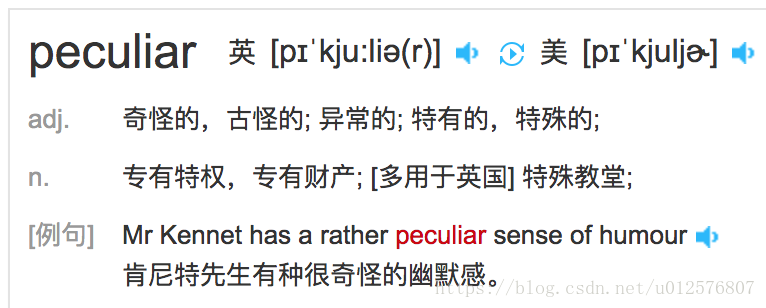
You'll get to that peculiar bracket notation in a moment ( 等过一会儿 ).
Looking beyond it, your intuition ( 直觉 ) suggests that you're binding to the button's disabled attribute
and setting it to the current value of the component's isUnchanged property.
Your intuition is incorrect! 大错特错
Your everyday HTML mental model is misleading. 误导
In fact, once you start data binding,
you are no longer working with HTML attributes.
You aren't setting attributes.
You are setting the properties of DOM elements, components, and directives.
HTML attribute vs. DOM property
The distinction between an HTML attribute and a DOM property
is crucial to understanding how Angular binding works.
Attributes are defined by HTML.
Properties are defined by the DOM (Document Object Model).
A few HTML attributes have 1:1 mapping to properties.
idis one example.Some HTML attributes don't have corresponding properties.
colspanis one example.Some DOM properties don't have corresponding attributes.
textContentis one example.Many HTML attributes appear to map to properties ... but not in the way you might think!
That last category is confusing until you grasp this general rule:
Attributes initialize DOM properties
and then they are done.
Property values can change; attribute values can't.
For example, when the browser renders <input type="text" value="Bob">,
it creates a corresponding DOM node with a value property initialized to "Bob".
When the user enters "Sally" into the input box,
the DOM element value property becomes "Sally".
But the HTML value attribute remains unchanged
as you discover if you ask the input element about that attribute: input.getAttribute('value') returns "Bob".
The HTML attribute value specifies the initial value;
the DOM value property is the current value.
The disabled attribute is another peculiar example.
A button's disabled property is false by default so the button is enabled.
When you add the disabled attribute,
its presence alone initializes the button's disabled property to true so the button is disabled.
Adding and removing the disabled attribute disables and enables the button.
The value of the attribute is irrelevant,
which is why you cannot enable a button by writing <button disabled="false">Still Disabled</button>.
Setting the button's disabled property (say, with an Angular binding)
disables or enables the button.
The value of the property matters.
The HTML attribute and the DOM property are not the same thing,
even when they have the same name.
This fact bears ( 值得 ) repeating( 重申 ):
Template binding works with properties and events, not attributes.

In the world of Angular,
the only role of attributes is to initialize element and directive state.
When you write a data binding, you're dealing exclusively with properties and events of the target object.
HTML attributes effectively disappear.
With this model firmly in mind, read on to learn about binding targets.
Binding targets
The target of a data binding is something in the DOM.
Depending on the binding type,
the target can be
an (element | component | directive) property,
an (element | component | directive) event,
or (rarely) an attribute name.
The following table summarizes:
| Type | Target | Examples |
|---|---|---|
| Property | Element property Component property Directive property | src/app/app.component.html
|
| Event | Element event Component event Directive event | src/app/app.component.html
|
| Two-way | Event and property | src/app/app.component.html |
| Attribute | Attribute (the exception) | src/app/app.component.html |
| Class | class property | src/app/app.component.html |
| Style | style property | src/app/app.component.html |
With this broad view in mind,
you're ready to look at binding types in detail.
Property binding ( [property] )
Write a template property binding to set a property of a view element.
The binding sets the property to the value of a template expression.
The most common property binding sets an element property to a component property value.
An example is binding the src property of an image element to a component's heroImageUrl property:
<img [src]="heroImageUrl">Another example is
disabling a button when the component says that it isUnchanged:
<button [disabled]="isUnchanged">Cancel is disabled</button>Another is
setting a property of a directive:
src/app/app.component.html<div [ngClass]="classes"> [ngClass] binding to the classes property</div>Yet another is
setting the model property of a custom component (a great way for parent and child components to communicate):
src/app/app.component.html<app-hero-detail [hero]="currentHero"></app-hero-detail>One-way in
People often describe property binding as one-way data binding
because it flows a value in one direction,
from a component's data property into a target element property.
You cannot use property binding to pull values out of the target element.
You can't bind to a property of the target element to read it.
You can only set it.
Similarly, you cannot use property binding to call a method on the target element.
If the element raises events,
you can listen to them with an event binding.
If you must read a target element property
or call one of its methods,
you'll need a different technique.
See the API reference for ViewChild and ContentChild.
Binding target
An element property
between enclosing square brackets
identifies the target property.
The target property in the following code is the image element's src property.
<img [src]="heroImageUrl">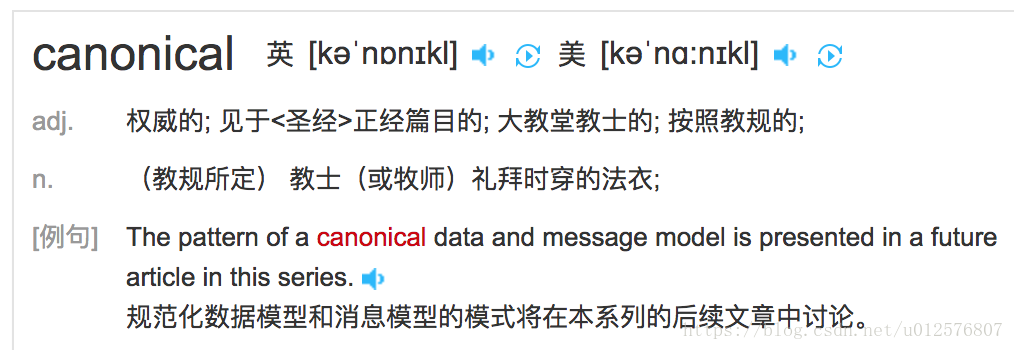
Some people prefer the bind- prefix alternative,
known as the canonical form:
src/app/app.component.html<img bind-src="heroImageUrl">The target name is always the name of a property,
even when it appears to be the name of something else.
You see src and may think it's the name of an attribute.
No. It's the name of an image element property.
Element properties may be the more common targets,
but Angular looks first to see if the name is a property of a known directive,
as it is in the following example:
src/app/app.component.html
<div [ngClass]="classes">[ngClass] binding to the classes property</div>Technically, Angular is matching the name to a directive input,
one of the property names listed in the directive's inputs array
or a property decorated with @Input().
Such inputs map to the directive's own properties.
If the name fails to match a property of a known directive or element,
Angular reports an “unknown directive” error.
Avoid side effects
As mentioned previously,
evaluation of a template expression should have no visible side effects.
The expression language itself does its part to keep you safe.
You can't assign a value to anything in a property binding expression
nor use the increment and decrement operators.
Of course, the expression might invoke a property or method that has side effects.
Angular has no way of knowing that or stopping you.
The expression could call something like getFoo().
Only you know what getFoo() does.
If getFoo() changes something and you happen to be binding to that something,
you risk an unpleasant experience.
Angular may or may not display the changed value.
Angular may detect the change and throw a warning error.
In general, stick to data properties and to methods that return values and do no more.
Return the proper type
The template expression should evaluate to the type of value expected by the target property.
Return a string if the target property expects a string.
Return a number if the target property expects a number.
Return an object if the target property expects an object.
The hero property of the HeroDetail component expects a Hero object,
which is exactly what you're sending in the property binding:
src/app/app.component.html<app-hero-detail [hero]="currentHero"></app-hero-detail>Remember the brackets [ ]
The brackets [ ] tell Angular to evaluate the template expression.
If you omit the brackets,
Angular treats the string as a constant and initializes the target property with that string.
It does not evaluate the string!
Don't make the following mistake:
src/app/app.component.html<!-- ERROR: HeroDetailComponent.hero expects a
Hero object, not the string "currentHero" -->
<app-hero-detail hero="currentHero"></app-hero-detail>One-time string initialization
意思是: 字符串 就别用 [ ] 了,浪费性能!
You should omit the brackets [ ] when all of the following are true:
- The target property accepts a string value.
- The string is a fixed value that you can bake into the template.
- This initial value never changes.
You routinely initialize attributes this way in standard HTML,
and it works just as well for directive and component property initialization.
The following example initializes the prefix property of the HeroDetailComponent to a fixed string, not a template expression.
Angular sets it and forgets about it.
src/app/app.component.html<app-hero-detail prefix="You are my" [hero]="currentHero"></app-hero-detail>The [hero] binding,
on the other hand,
remains a live binding to the component's currentHero property.
Property binding or interpolation?
You often have a choice between interpolation and property binding.
The following binding pairs do the same thing:
src/app/app.component.html<p><img src="{{heroImageUrl}}"> is the <i>interpolated</i> image.</p> <p><img [src]="heroImageUrl"> is the <i>property bound</i> image.</p><p><span>"{{title}}" is the <i>interpolated</i> title.</span></p> <p>"<span [innerHTML]="title"></span>" is the <i>property bound</i> title.</p>
Interpolation is a convenient alternative to property binding in many cases.
When rendering data values as strings,
there is no technical reason to prefer one form to the other.
You lean toward ( 倾向 ) readability,
which tends to favor interpolation.
You suggest establishing coding style rules
and choosing the form that both conforms to the rules and feels most natural for the task at hand.
When setting an element property to a non-string data value, you must use property binding.

Content security
Imagine the following malicious content.
src/app/app.component.tsevilTitle = 'Template <script>alert("evil never sleeps")</script>Syntax';Fortunately, Angular data binding is on alert for dangerous HTML.
It sanitizes the values before displaying them.
It will not allow HTML with script tags to leak into the browser,
neither with interpolation nor property binding.
src/app/app.component.html
<!--
Angular generates warnings for these two lines as it sanitizes them
WARNING: sanitizing HTML stripped some content (see http://g.co/ng/security#xss).
-->
<p><span>"{{evilTitle}}" is the <i>interpolated</i> evil title.</span></p>
<p>"<span [innerHTML]="evilTitle"></span>" is the <i>property bound</i> evil title.</p>Interpolation handles the script tags differently than property binding but
both approaches render the content harmlessly.
效果如下:
Attribute, class, and style bindings
The template syntax provides specialized one-way bindings for
scenarios ( 场景 ) less well suited to property binding.
Attribute binding
You can set the value of an attribute directly with an attribute binding.
This is the only exception to the rule that a binding sets a target property.
This is the only binding that creates and sets an attribute.
This guide stresses repeatedly that setting an element property with a property binding
is always preferred to ( 优于 ) setting the attribute with a string.
Why does Angular offer attribute binding?
You must use attribute binding when there is no element property to bind.
Consider the ARIA, SVG, and table span attributes.
ARIA: Accessible Rich Internet Applications
They are pure attributes.
They do not correspond to element properties,
and they do not set element properties.
There are no property targets to bind to.
This fact becomes painfully obvious when you write something like this.
<tr><td colspan="{{1 + 1}}">Three-Four</td></tr>And you get this error:
Template parse errors:
Can't bind to 'colspan' since it isn't a known native property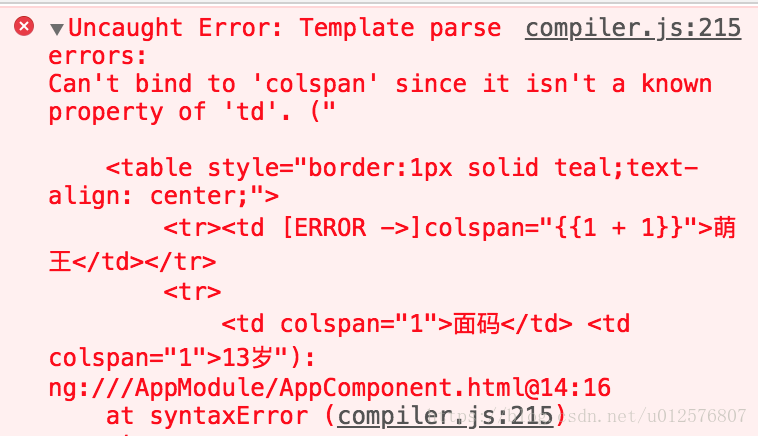
As the message says, the <td> element does not have a colspan property.
It has the "colspan" attribute,
but interpolation and property binding can set only properties, not attributes.
You need attribute bindings to create and bind to such attributes.
注意: property binding 与 attribute binding的区别
Attribute binding syntax resembles property binding.
Instead of an element property between brackets,
1. start with the prefix attr,
2. followed by a dot (.)
3. and the name of the attribute.
You then set the attribute value, using an expression that resolves to a string.
Bind [attr.colspan] to a calculated value:
content_copy<table border=1>
<!-- expression calculates colspan=2 -->
<tr><td [attr.colspan]="1 + 1">One-Two</td></tr>
<!-- ERROR: There is no `colspan` property to set!
<tr><td colspan="{{1 + 1}}">Three-Four</td></tr>
-->
<tr><td>Five</td><td>Six</td></tr>
</table>Here's how the table renders:
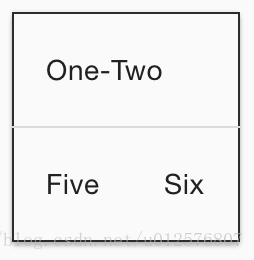

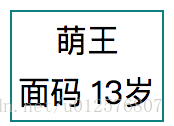
One of the primary use cases for attribute binding
is to set ARIA attributes, as in this example:
Accessible Rich Internet Applications (ARIA)
规定了能够让 Web 内容和 Web 应用
(特别是那些由 Ajax 和 JavaScript 开发的)
对于残障人士更易使用的各种机制。
src/app/app.component.html
<!-- create and set an aria attribute for assistive technology -->
<button [attr.aria-label]="actionName">{{actionName}} with Aria</button>Class binding
You can add and remove CSS class names
from an element's class attribute with a class binding.
Class binding syntax resembles property binding.
Instead of an element property between brackets,
1. start with the prefix class,
2. optionally followed by a dot (.)
3. and the name of a CSS class: [class.class-name].
2和3为可选的
The following examples show
how to add and remove the application's "special" class with class bindings.
Here's how to set the attribute without binding:
src/app/app.component.html<!-- standard class attribute setting -->
<div class="bad curly special">Bad curly special</div>You can replace that with a binding to a string of the desired class names;
this is an all-or-nothing, replacement binding.
src/app/app.component.html<!-- reset/override all class names with a binding -->
<div class="bad curly special"
[class]="badCurly">Bad curly</div>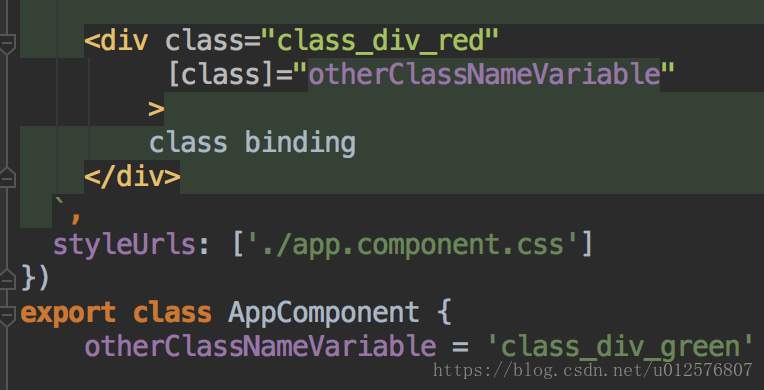
Finally, you can bind to a specific class name.
Angular adds the class when the template expression evaluates to truthy.
It removes the class when the expression is falsy.
src/app/app.component.html<!-- toggle the "special" class on/off with a property -->
<div [class.special]="isSpecial">The class binding is special</div>
<!-- binding to `class.special` trumps the class attribute -->
<div class="special"
[class.special]="!isSpecial">This one is not so special</div>While 尽管 this is a fine way to toggle a single class name,
但是, the NgClass directive is usually preferred
when managing multiple class names at the same time.
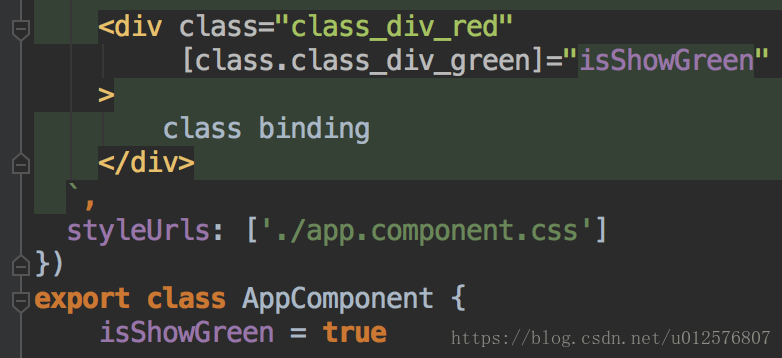
Style binding
You can set inline styles with a style binding.
Style binding syntax resembles property binding. (resemble类似)
Instead of an element property between brackets,
start with the prefix style , followed by a dot (.)
and the name of a CSS style property:
例如: [style.style-property]
<button [style.color]="isSpecial ? 'red': 'green'">Red</button>
<button [style.background-color]="canSave ? 'cyan': 'grey'" >Save</button>Some style binding styles have a unit extension. (带单位)
The following example conditionally sets the font size in “em” and “%” units .
例如: [style.font-size.px]="isTitle? 24: 16"
src/app/app.component.html<button [style.font-size.em]="isSpecial ? 3 : 1" >Big</button>
<button [style.font-size.%]="!isSpecial ? 150 : 50" >Small</button>While(尽管) this is a fine way to set a single style,
(但是) the NgStyle directive is generally preferred
when setting several inline styles at the same time.
Note that :
a style property name can be written in either dash-case, as shown above,
or camelCase, such as fontSize.
Event binding ( (event) 或者 (click) )
The bindings directives you've met so far
flow data in one direction: from a component to an element.
Users don't just stare at the screen.
They enter text into input boxes.
They pick items from lists.
They click buttons.
Such user actions may result in :
a flow of data in the opposite direction: from an element to a component.
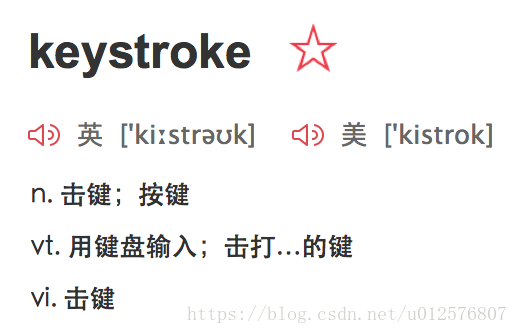
The only way to know about a user action is to listen for certain events
such as keystrokes, mouse movements, clicks, and touches.
You declare your interest in user actions through Angular event binding.
Event binding syntax consists of a target event name within parentheses (小括号) on the left of an equal sign(等号),
and a quoted template statement on the right.
The following event binding listens for the button's click events,
calling the component's onSave() method whenever a click occurs:
<button (click)="onSave()">Save</button>Target event
A name between parentheses — for example, (click) —
identifies the target event.
In the following example, the target is the button's click event.
src/app/app.component.html<button (click)="onSave()">Save</button>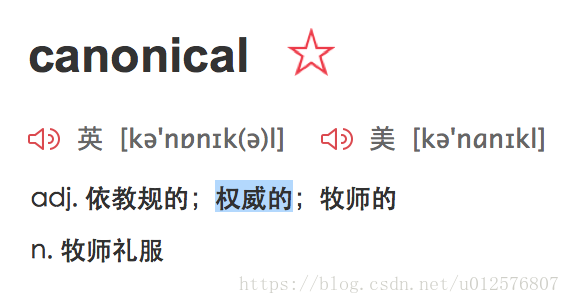
Some people prefer the on- prefix alternative, known as the canonical form (规范形式):
<button on-click="onSave()">On Save</button>Element events may be the more common targets,
but Angular looks first to see if the name matches an event property of a known directive,
as it does in the following example:
src/app/app.component.html
<!-- `myClick` is an event on the custom `ClickDirective` -->
<div (myClick)="clickMessage=$event" clickable>click with myClick</div>The myClick directive is further described in the section on aliasing input/output properties.
If the name fails to match an element event
or an output property of a known directive,
Angular reports an “unknown directive” error.
$event and event handling statements
In an event binding,
Angular sets up an event handler for the target event.
When the event is raised, the handler executes the template statement.
The template statement typically involves a receiver,
which performs an action in response to the event,
such as storing a value from the HTML control into a model.
The binding conveys information about the event, including data values,
through an event object named $event.
The shape of the event object is determined by the target event.
If the target event is a native DOM element event,
then $event is a DOM event object, with properties such as target and target.value.
Consider this example:
src/app/app.component.html<input [value]="currentHero.name"
(input)="currentHero.name=$event.target.value" >This code sets the input box value property by binding to the name property. (单向绑定)
To listen for changes to the value,
the code binds to the input box's input event.
When the user makes changes, the input event is raised,
and the binding executes the statement within a context that includes the DOM event object, $event.
To update the name property, the changed text is retrieved by following the path $event.target.value.
If the event belongs to a directive (recall 回想一下 that components are directives 组件是指令的一种),
$event has whatever shape the directive decides to produce.
Custom events with EventEmitter
Directives typically raise custom events with an Angular EventEmitter.
The directive creates an EventEmitter and exposes it as a property.
The directive calls EventEmitter.emit(payload) to fire an event,
passing in a message payload, which can be anything.
Parent directives listen for the event by binding to this property
and accessing the payload through the $event object.
Consider a HeroDetailComponent that presents hero information and responds to user actions.
Although the HeroDetailComponent has a delete button it doesn't know how to delete the hero itself.
The best it can do is raise an event reporting the user's delete request.
Here are the pertinent excerpts from that HeroDetailComponent:
template: `
<div>
<img src="{{heroImageUrl}}">
<span [style.text-decoration]="lineThrough">
{{prefix}} {{hero?.name}}
</span>
<button (click)="deleteBtnClicked()">Delete</button>
</div>`// This component makes a request but it can't actually delete a hero.// 注意: 左边的就是事件名 (子组件内部发生的事件名,类似click) deleteRequest = new EventEmitter<Hero>(); deleteBtnClicked() { this.deleteRequest.emit(this.hero); }
The component defines a deleteRequest property that returns an EventEmitter.
When the user clicks delete, the component invokes the delete() method,
then telling the EventEmitter to emit a Hero object.
Now imagine a hosting parent component
that binds to the HeroDetailComponent's deleteRequest event.
<app-hero-detail (deleteRequest)="deleteHero($event)" [hero]="currentHero"></app-hero-detail>父组件中, 监听子组件的 deleteRequest事件, 并执行父组件中的deleteHero方法,参数是$event;父组件给子组件单向绑定了一个currentHero给子组件的hero属性
When the deleteRequest event fires,
Angular calls the parent component's deleteHero method,
passing the hero-to-delete (emitted by HeroDetailComponent) in the $event variable.
Template statements have side effects (副作用)
The deleteHero method has a side effect: it deletes a hero.
Template statement side effects are not just OK, but expected (不只是OK,还恰恰是被期望的).
Deleting the hero updates the model,
perhaps triggering other changes including queries and saves to a remote server.
These changes percolate through the system
and are ultimately displayed in this and other views.
Two-way binding ( [(...)] ) 双向绑定
You often want to both display a data property
and update that property when the user makes changes.
On the element side (在元素层面上) that takes a combination of setting a specific element property
and listening for an element change event.
Angular offers a special two-way data binding syntax for this purpose, [(x)].
The [(x)] syntax combines the brackets of property binding, [x],
with the parentheses of event binding, (x).
Visualize a banana in a box to remember
that the parentheses go inside the brackets.
The [(x)] syntax is easy to demonstrate
when the element has a settable property called x
and a corresponding event named xChange.
Here's a SizerComponent that fits the pattern.
It has a size value property and a companion sizeChange event:
- import { Component, EventEmitter, Input, Output } from '@angular/core';
- @Component({
- selector: 'app-sizer',
- template: `
- <div>
- <button (click)="dec()" title="smaller">-</button>
- <button (click)="inc()" title="bigger">+</button>
- <label [style.font-size.px]="size">FontSize: {{size}}px</label>
- </div>`
- })
- export class SizerComponent {
- @Input() size: number | string;
- // 注意: 左边的就是子组件内部发生的事件名,类似于click
- @Output() sizeChange = new EventEmitter<number>();
- dec() { this.resize(-1); }
- inc() { this.resize(+1); }
- resize(delta: number) {
- // 范围: 8 ~ 40 牛B!
- this.size = Math.min(40, Math.max(8, +this.size + delta));
- this.sizeChange.emit(this.size);
- }
- }
The initial size is an input value from a property binding.
Clicking the buttons increases or decreases the size,
within min/max values constraints,
and then raises (emits) the sizeChange event (事件名 就是 定义的属性名) with the adjusted size.
Here's an example in which the AppComponent.fontSizePx is two-way bound to the SizerComponent:
<app-sizer [(size)]="fontSizePx"></app-sizer>
<div [style.font-size.px]="fontSizePx">Resizable Text</div>The AppComponent.fontSizePx establishes the initial SizerComponent.size value.
Clicking the buttons updates the AppComponent.fontSizePx via the two-way binding.
The revised AppComponent.fontSizePx value flows through to the style binding, making the displayed text bigger or smaller.
The two-way binding syntax is really just syntactic sugar (语法糖)
for a property binding and an event binding.
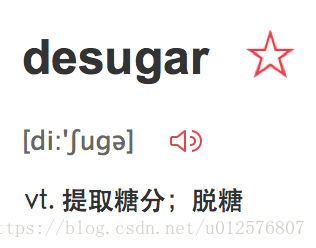
Angular desugars the SizerComponent binding into this:
<app-sizer [size]="fontSizePx" (sizeChange)="fontSizePx=$event"></app-sizer>The $event variable contains the payload of the SizerComponent.sizeChange event.
Angular assigns the $event value to the AppComponent.fontSizePx when the user clicks the buttons.
Clearly the two-way binding syntax is a great convenience compared to separate property and event bindings.
It would be convenient to use two-way binding with HTML form elements like <input> and <select>.
However, no native HTML element follows the x value and xChange event pattern.
Fortunately, the Angular NgModel directive is a bridge that enables two-way binding to form elements.
Built-in directives
Earlier versions of Angular.JS included over seventy built-in directives. (70种!!!)
The community contributed many more, and countless private directives have been created for internal applications.
幸运的是, You don't need many of those directives in new Angular.
You can often achieve the same results with the more capable and expressive Angular binding system.
Why create a directive to handle a click when you can write a simple binding such as this?
src/app/app.component.html<button (click)="onSave()">Save</button>You still benefit from directives that simplify complex tasks.
Angular still ships with built-in directives; just not as many.
You'll write your own directives, just not as many.
This segment reviews some of the most frequently used built-in directives,
classified as either attribute directives 属性型指令 or structural directives 结构型指令.
Built-in attribute directives
Attribute directives listen to and modify
the behavior of other HTML elements, attributes(元素属性), properties(DOM属性), and components.
They are usually applied to elements as if they were HTML attributes, hence the name.
Many details are covered in the Attribute Directives guide (属性型指令).
Many NgModules such as the RouterModule and the FormsModule
define their own attribute directives.
This section is an introduction to the most commonly used attribute directives:
NgClass- add and remove a set of CSS classesNgStyle- add and remove a set of HTML stylesNgModel- two-way data binding to an HTML form element
NgClass
You typically control how elements appear by adding and removing CSS classes dynamically.
You can bind to the ngClass to add or remove several classes simultaneously.
A class binding is a good way to add or remove a single class.
src/app/app.component.html<!-- toggle the "special" class on/off with a property -->
<div [class.special]="isSpecial">The class binding is special</div>To add or remove many CSS classes at the same time,
the NgClass directive may be the better choice.
Try binding ngClass to a key:value control object.
Each key of the object is a CSS class name; (key是class name)
its value is true if the class should be added,
false if it should be removed.
Consider a setCurrentClasses component method that sets a component property,
currentClasses with an object that adds or removes three classes (如下所示)
based on the true/false state of three other component properties:
currentClasses: {};
setCurrentClasses() {
// CSS classes: added/removed per current state of component properties
this.currentClasses = {
'saveable': this.canSave,
'modified': !this.isUnchanged,
'special': this.isSpecial
};
}Adding an ngClass property binding [ngClass]属性绑定
to currentClasses sets the element's classes accordingly:
<div [ngClass]="currentClasses">This div is initially saveable, unchanged, and special</div>It's up to you (由你决定,什么时候,调用)to call setCurrentClasses(),
both initially and when the dependent properties change.
(既可以在初始化时,又可以在所依赖的属性发生变化时调用)
NgStyle
You can set inline styles dynamically, based on the state of the component.
With NgStyle you can set many inline styles simultaneously.
A style binding is an easy way to set a single style value.
src/app/app.component.html<div [style.font-size]="isSpecial ? 'x-large' : 'smaller'" >
This div is x-large or smaller.
</div>但是,To set many inline styles at the same time,
the NgStyle directive may be the better choice.
Try binding ngStyle to a key:value control object.
Each key of the object is a style name;
its value is whatever is appropriate for that style.
Consider a setCurrentStyles component method that sets a component property,
currentStyles with an object that defines three styles(如下所示),
based on the state of three other component properties:
src/app/app.component.tscurrentStyles: {};
setCurrentStyles() {
// CSS styles: set per current state of component properties
this.currentStyles = {
'font-style': this.canSave ? 'italic' : 'normal',
'font-weight': !this.isUnchanged ? 'bold' : 'normal',
'font-size': this.isSpecial ? '24px' : '12px'
};
}Adding an ngStyle property binding [ngStyle] 属性绑定 to currentStyles sets the element's styles accordingly:
<div [ngStyle]="currentStyles">
This div is initially italic, normal weight, and extra large (24px).
</div>It's up to you (什么时候调用取决于妳)to call setCurrentStyles(),
both initially and when the dependent properties change.
既可以在初始化时,也可以在依赖的属性值改变时
NgModel - Two-way binding to form elements with [(ngModel)]
When developing data entry forms,
you often both display a data property
and update that property when the user makes changes.
Two-way data binding with the NgModel directive makes that easy.
Here's an example:
src/app/app.component.html (NgModel-1)<input [(ngModel)]="currentHero.name">FormsModule is required to use ngModel
Before using the ngModel directive in a two-way data binding,
you must import the FormsModule and add it to the NgModule's imports list.
Learn more about the FormsModule and ngModel in the Forms guide.
Here's how to import the FormsModule to make [(ngModel)] available.
import { NgModule } from '@angular/core';
import { BrowserModule } from '@angular/platform-browser';
import { FormsModule } from '@angular/forms'; // <--- JavaScript import from Angular
/* Other imports */
@NgModule({
imports: [
BrowserModule,
FormsModule // <--- import into the NgModule
],
/* Other module metadata */
})
export class AppModule { }Inside [(ngModel)]
Looking back at the name binding,
note that you could have achieved the same result
with separate bindings to the <input> element's value property and input event.
src/app/app.component.html
<input [value]="currentHero.name"
(input)="currentHero.name=$event.target.value" >That's cumbersome.
Who can remember which element property to set and which element event emits user changes?
How do you extract the currently displayed text from the input box so you can update the data property?
Who wants to look that up each time?
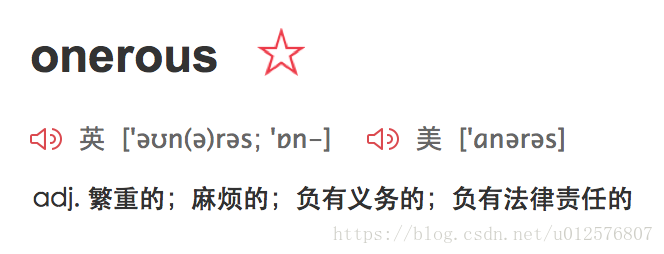
That ngModel directive hides these onerous details behind its own ngModel input
and ngModelChange output properties.
<input
[ngModel]="currentHero.name"
(ngModelChange)="currentHero.name=$event">The ngModel data property sets the element's value property
and the ngModelChange event property listens for changes to the element's value.
The details are specific to each kind of element
and therefore the NgModel directive only works for an element supported by a ControlValueAccessor
that adapts an element to this protocol.
The <input> box is one of those elements.
Angular provides value accessors for all of the basic HTML form elements
and the Forms guide shows how to bind to them.
You can't apply [(ngModel)] to a non-form native element or a third-party custom component
until you write a suitable value accessor, a technique that is beyond the scope of this guide.
You don't need a value accessor for an Angular component that you write
because you can name the value and event properties to suit Angular's basic two-way binding syntax
and skip NgModel altogether.
The sizer shown above is an example of this technique.
尽管 Separate ngModel bindings is an improvement over binding to the element's native properties.
但是, You can do better.
You shouldn't have to mention the data property twice.
Angular should be able to capture the component's data property
and set it with a single declaration,
which it can with the [(ngModel)] syntax:
<input [(ngModel)]="currentHero.name">Is [(ngModel)] all you need?
Is there ever a reason to fall back to its expanded form? 有什么理由再回退到原始的展开形式???
The [(ngModel)] syntax can only set a data-bound property.
If you need to do something more or something different, you can write the expanded form.
The following contrived example forces the input value to uppercase:
src/app/app.component.html<input
[ngModel]="currentHero.name"
(ngModelChange)="setUppercaseName($event)">Here are all variations in action, including the uppercase version:
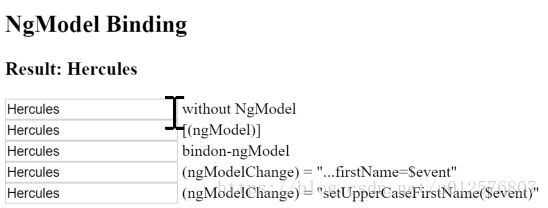
Built-in structural directives
Structural directives are responsible for HTML layout.
They shape or reshape the DOM's structure,
typically by adding, removing, and manipulating the host elements to which they are attached.
The deep details of structural directives are covered in the Structural Directives guide where you'll learn:
- why you prefix the directive name with an asterisk (*).
- to use
<ng-container>to group elements when there is no suitable host element for the directive. - how to write your own structural directive.
- that you can only apply one structural directive to an element ???Excuse Me???.
This section is an introduction to the common structural directives:
NgIf- conditionally add or remove an element from the DOMNgSwitch- a set of directives that switch among alternative views- NgForOf - repeat a template for each item in a list
NgIf
You can add or remove an element from the DOM
by applying an NgIf directive to that element (called the host element).
Bind the directive to a condition expression like isActive in this example.
src/app/app.component.html<app-hero-detail *ngIf="isActive"></app-hero-detail>Don't forget the asterisk (*) in front of ngIf
When the isActive expression returns a truthy value,
NgIf adds the HeroDetailComponent to the DOM.
When the expression is falsy,
NgIf removes the HeroDetailComponent from the DOM,
destroying that component and all of its sub-components.
Show/hide is not the same thing
You can control the visibility of an element with a class or style binding:
src/app/app.component.html<!-- isSpecial is true -->
<div [class.hidden]="!isSpecial">Show with class</div>
<div [class.hidden]="isSpecial">Hide with class</div>
<!-- HeroDetail is in the DOM but hidden -->
<app-hero-detail [class.hidden]="isSpecial"></app-hero-detail>
<div [style.display]="isSpecial ? 'block' : 'none'">Show with style</div>
<div [style.display]="isSpecial ? 'none' : 'block'">Hide with style</div>Hiding an element is quite different from removing an element with NgIf (类似于v-if 和 v-show)
When you hide an element, that element and all of its descendents remain in the DOM.
All components for those elements stay in memory
and Angular may continue to check for changes.
You could be holding onto considerable computing resources
and degrading performance, for something the user can't see.
When NgIf is false, Angular removes the element and its descendents from the DOM.
It destroys their components,
potentially (潜在地) freeing up substantial resources,
resulting in a more responsive user experience.
The show/hide technique is fine for a few elements with few children.
You should be wary when hiding large component trees;
NgIf may be the safer choice.
Guard against null
The ngIf directive is often used to guard against null.
Show/hide is useless as a guard.
Angular will throw an error if a nested expression tries to access a property of null.
Here we see NgIf guarding two <div>s.
The currentHero name will appear only when there is a currentHero.
The nullHero will never be displayed.
<div *ngIf="currentHero">Hello, {{currentHero.name}}</div>
<div *ngIf="nullHero">Hello, {{nullHero.name}}</div>See also the safe navigation operator described below.
NgForOf
NgForOf is a repeater directive — a way to present a list of items.
You define a block of HTML that defines how a single item should be displayed.
Then You tell Angular to use that block as a template for rendering each item in the list.
*ngFor="let girl of girlArr"
Here is an example of NgForOf applied to a simple <div>:
<div *ngFor="let hero of heroes">{{hero.name}}</div>You can also apply an NgForOf to a component element, as in this example:
src/app/app.component.html<app-hero-detail *ngFor="let hero of heroes" [hero]="hero"></app-hero-detail>Don't forget the asterisk (*) in front of ngFor.
The text(文本) assigned to *ngFor is the instruction that guides the repeater process.
*ngFor microsyntax
The string assigned to *ngFor is not a template expression.
It's a microsyntax — a little language of its own that Angular interprets.
The string "let hero of heroes" means:
1. Take each hero in the
heroesarray,2. store it in the local
herolooping variable,3. and make it available to the templated HTML for each iteration.
Angular translates this instruction into a <ng-template> around the host element,
then uses this template repeatedly to create a new set of elements
and bindings for each hero in the list.
Learn about the microsyntax in the Structural Directives guide.
Template input variables
The let keyword before hero creates a template input variable called hero.
The NgForOf directive iterates over the heroes array returned by the parent component's heroes property
and sets hero to the current item from the array during each iteration.
You reference the hero input variable
within the NgForOf host element (and within its descendants)
to access the hero's properties.
Here it is referenced first in an interpolation
and then passed in a binding to the hero property of the <hero-detail> component.
<div *ngFor="let hero of heroes">{{hero.name}}</div>
<app-hero-detail *ngFor="let hero of heroes" [hero]="hero"></app-hero-detail>Learn more about template input variables in the Structural Directives guide.
*ngFor with index
The index property of the NgForOf directive context
returns the zero-based index of the item in each iteration.
You can capture the index in a template input variable and use it in the template.
The next example captures the index in a variable named i and displays it with the hero name like this.
<div *ngFor="let hero of heroes; let i=index">{{i + 1}} - {{hero.name}}</div>NgFor is implemented by the NgForOf directive.
Read more about the other NgForOf context values
such as last,even, and odd in the NgForOf API reference.
*ngFor with trackBy
The NgForOf directive may perform poorly, especially with large lists.
A small change to one item, an item removed, or an item added can trigger a cascade (级联) of DOM manipulations.
For example, re-querying the server could reset the list with all new hero objects.
Most, if not all, are previously displayed heroes.
You know this because the id of each hero hasn't changed.
But Angular sees only a fresh list of new object references.
It has no choice but to tear down the old DOM elements and insert all new DOM elements.
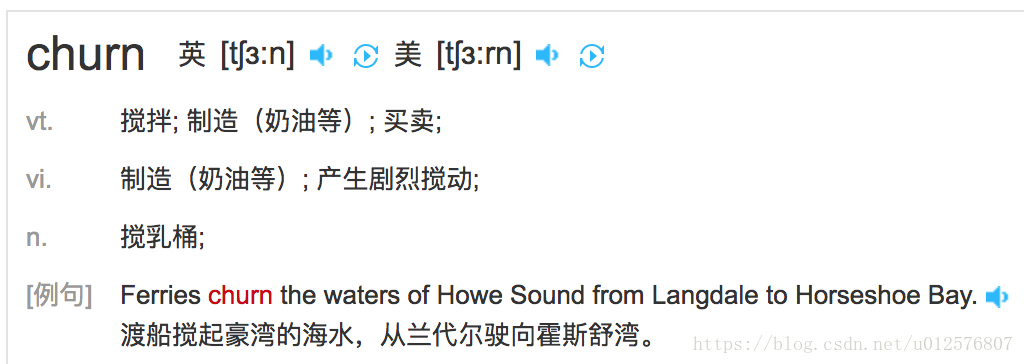
Angular can avoid this churn (折腾) with trackBy.
Add a method to the component
that returns the value NgForOf should track.
In this case, that value is the hero's id.
trackByHeroes(index: number, hero: Hero): number { return hero.id; }In the microsyntax expression, set trackBy to this method.
<div *ngFor="let hero of heroes; trackBy: trackByHeroes">
({{hero.id}}) {{hero.name}}
</div>Here is an illustration of the trackBy effect.
"Reset heroes" creates new heroes with the same hero.ids.
"Change ids" creates new heroes with new hero.ids.
- With no
trackBy, both buttons trigger complete DOM element replacement. - With
trackBy, only changing theidtriggers element replacement.

The NgSwitch directives
NgSwitch is like the JavaScript switch statement.
It can display one element from among several possible elements,
based on a switch condition.
Angular puts only the selected element into the DOM.
NgSwitch is actually a set of three, cooperating directives:
1. NgSwitch,
2. NgSwitchCase,
3. and NgSwitchDefault as seen in this example.

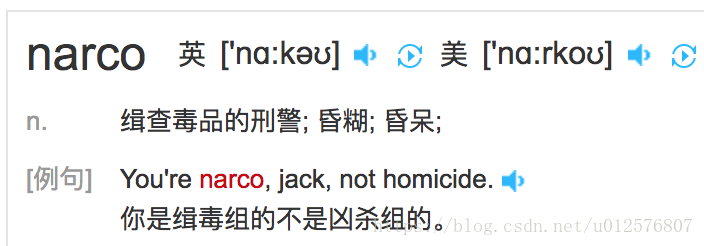
src/app/app.component.html
<div [ngSwitch]="currentHero.emotion">
<app-happy-hero *ngSwitchCase="'happy'" [hero]="currentHero"></app-happy-hero>
<app-sad-hero *ngSwitchCase="'sad'" [hero]="currentHero"></app-sad-hero>
<app-confused-hero *ngSwitchCase="'confused'" [hero]="currentHero"></app-confused-hero>
<app-unknown-hero *ngSwitchDefault [hero]="currentHero"></app-unknown-hero>
</div>
NgSwitch is the controller directive.
Bind it to an expression that returns the switch value.
The emotion value in this example is a string, but the switch value can be of any type.
Bind to [ngSwitch].
You'll get an error if you try to set *ngSwitch
because NgSwtich is an attribute directive, not a structural directive.
It changes the behavior of its companion directives.
It doesn't touch the DOM directly.
Bind to *ngSwitchCase and *ngSwitchDefault.
The NgSwitchCase and NgSwitchDefault directives are structural directives
because they add or remove elements from the DOM.
- NgSwitchCase adds its element to the DOM when its bound value equals the switch value.
- NgSwitchDefault adds its element to the DOM when there is no selected NgSwitchCase.
The switch directives are particularly useful for adding and removing component elements.
This example switches among four "emotional hero" components defined in the hero-switch.components.ts file.
Each component has a hero input property which is bound to the currentHero of the parent component.
Switch directives work as well with native elements and web components too.
For example, you could replace the <confused-hero> switch case with the following.
<div *ngSwitchCase="'confused'">Are you as confused as {{currentHero.name}}?</div>Template reference variables ( #var )
A template reference variable is often a reference to a DOM element within a template.
It can also be a reference to an Angular component or directive or a web component.
Use the hash symbol (#) to declare a reference variable.
The #phone declares a phone variable on an <input> element.
<input #phoneNode placeholder="phone number">You can refer to a template reference variable anywhere in the template.
The phoneNode variable declared on this <input> is consumed in a <button> on the other side of the template
<input #phoneNode placeholder="phone number">
<!-- lots of other elements -->
<!-- phoneNode refers to the input element; pass its `value` to an event handler -->
<button (click)="callPhone(phoneNode.value)">Call</button>How a reference variable gets its value
In most cases, Angular sets the reference variable's value to the element on which it was declared.
In the previous example, phoneNode refers to the phone number <input> box.
The phone button click handler passes the input value to the component's callPhone method.
But a directive can change that behavior and set the value to something else,
such as itself. The NgForm directive does that.
The following is a simplified version of the form example in the Forms guide.
src/app/hero-form.component.html<form (ngSubmit)="onSubmit(heroForm)" #heroForm="ngForm">
<div class="form-group">
<label for="name">Name
<input class="form-control" name="name" required [(ngModel)]="hero.name">
</label>
</div>
<button type="submit" [disabled]="!heroForm.form.valid">Submit</button>
</form>
<div [hidden]="!heroForm.form.valid">
{{submitMessage}}
</div>A template reference variable, heroForm, appears three times in this example,
separated by a large amount of HTML. What is the value of heroForm?
下面这句话有点绕:
如果Angular没有接管表单的话,那么它将是 HTMLFormElement
但是, 一旦你导入了FormsModule的话, Angular将接管表单 (意思是这时候它就不是HTMLFormElement了)
If Angular hadn't taken it over when you imported the FormsModule, it would be the HTMLFormElement.
The heroForm is actually a reference to an Angular NgForm directive
with the ability to track the value and validity of every control in the form.
The native <form> element doesn't have a form property.
But the NgForm directive does,
which explains how you can disable the submit button if the heroForm.form.valid is invalid
and pass the entire form control tree to the parent component's onSubmit method.
Template reference variable warning notes
A template reference variable (#phoneNode)
is not the same as a template input variable (let phone) such as you might see in an *ngFor.
Learn the difference in the Structural Directives guide.
The scope of a reference variable is the entire template (整个模板).
Do not define the same variable name more than once in the same template.
The runtime value will be unpredictable.
You can use the ref- prefix alternative to #.
This example declares the cupNode variable as ref-cupNode instead of #cupNode.
<input ref-cupNode placeholder="girl's cup">
<button (click)="showGirlCup(cupNode.value)">show girl's cup</button>Input and Output properties
An Input property is a settable property annotated with an @Input decorator.
Values flow into the property when it is data bound with a property binding
An Output property is an observable property annotated with an @Output decorator.
The property almost always returns an Angular EventEmitter.
Values flow out of the component as events bound with an event binding.
You can only bind to another component or directive through its Input and Output properties.
Remember that all components are directives.
The following discussion refers to components for brevity
and because this topic is mostly a concern for component authors.
Discussion
You are usually binding a template to its own component class.
In such binding expressions, the component's property or method is to the right of the (=).
<img [src]="iconUrl"/>
<button (click)="onSave()">Save</button>The iconUrl and onSave are members of the AppComponent class.
They are not decorated with @Input() or @Output.
下面这句有点叼 ( Angular 不 在 乎)
Angular does not object.
You can always bind to a public property of a component in its own template.
It doesn't have to be an Input or Output property
A component's class and template are closely coupled.
They are both parts of the same thing.
Together they are the component.
Exchanges between a component class and its template are internal implementation details.
Binding to a different component
You can also bind to a property of a different component.
In such bindings, the other component's property is to the left of the (=).
In the following example,
the AppComponent template binds AppComponent class members to properties of the HeroDetailComponent
whose selector is 'app-hero-detail'.
src/app/app.component.html
说明: 监听来自app-hero-detail组件内部发出的事件:deleteRequestFromDetailComponent
事件处理函数 deleteHeroHandlerInAppComponent 位于app.component
<app-hero-detail [hero]="currentHero"(deleteRequestFromDetailComponent)="deleteHeroHandlerInAppComponent($event)"> </app-hero-detail>
The Angular compiler may reject these bindings with errors like this one:
Uncaught Error: Template parse errors:
Can't bind to 'hero' since it isn't a known property of 'app-hero-detail'You know that HeroDetailComponent has hero and deleteRequestFromDetailComponent properties.
But the Angular compiler refuses to recognize them.
这是因为,默认情况下:
The Angular compiler won't bind to properties of a different component
unless they are Input or Output properties.
There's a good reason for this rule.
It's OK for a component to bind to its own properties.
The component author is in complete control of those bindings.
But other components shouldn't have that kind of unrestricted access.
You would have a hard time supporting your component if anyone could bind to any of its properties.
Outside components should only be able to bind to the component's public binding API.
Angular asks you to be explicit about that API.
It's up to you to decide which properties are available for binding by external components.
TypeScript public doesn't matter
You can't use the TypeScript public and private access modifiers
to shape the component's public binding API.
All data bound properties must be TypeScript public properties.
Angular never binds to a TypeScript private property.
Angular requires some other way to identify properties
that outside components are allowed to bind to.
That other way is the @Input() and @Output() decorators.
Declaring Input and Output properties
In the sample for this guide,
the bindings to HeroDetailComponent do not fail
because the data bound properties are annotated with @Input() and @Output() decorators.
@Input() hero: Hero;
@Output() deleteRequestFromDetailComponent = new EventEmitter<Hero>();Alternatively, you can identify members in the inputs and outputs arrays of the directive metadata,
as in this example:
src/app/hero-detail.component.ts@Component({
inputs: ['hero'],
outputs: ['deleteRequestFromDetailComponent'],
})Input or output?
Input properties usually receive data values.
Output properties expose event producers, such as EventEmitter objects.
下面这句翻译有点绕:
输入和输出这两个词 是从目标指令的角度来说的 (不能说点人话么?)
The terms input and output reflect the perspective of the target directive.

HeroDetailComponent.hero is an input property
from the perspective of HeroDetailComponent
because data flows into that property from a template binding expression.
HeroDetailComponent.deleteRequestFromDetailComponent is an output property
from the perspective of HeroDetailComponent
because events stream out of that property and toward the handler in a template binding statement.
Aliasing input/output properties
Sometimes the public name of an input/output property
should be different from the internal name.
This is frequently the case with attribute directives.
Directive consumers expect to bind to the name of the directive.
For example, when you apply a directive with a myClick selector to a <div> tag,
you expect to bind to an event property that is also called myClick.
src/app/app.component.html
<div (myClick)="clickMessage=$event" clickable>click with myClick</div>
However, the directive name is often a poor (不好的) choice
for the name of a property within the directive class.
The directive name rarely describes what the property does.
The myClick directive name is not a good name for a property that emits click messages.
Fortunately, you can have a public name for the property that meets (满足) conventional expectations,
while using a different name internally.
In the example immediately above,
you are actually binding through the myClick alias to the directive's own clicks property.
You can specify the alias for the property name
by passing it into the input/output decorator like this:
src/app/click.directive.ts
@Output('myClick') clickEmitter = new EventEmitter<string>();// @Output(alias) propertyName = ...
You can also alias property names in the inputs and outputs arrays.
You write a colon-delimited (:) string with the directive property name on the left
and the public alias on the right:
@Directive({ outputs: ['clickEmitter:myClick']// propertyName:alias })
Template expression operators
The template expression language
employs(使用了) a subset(子集) of JavaScript syntax
supplemented with a few special operators for specific scenarios(场景).
The next sections cover two of these operators: pipe and safe navigation operator.
The pipe operator ( | )
The result of an expression might require some transformation before you're ready to use it in a binding.
For example, you might display a number as a currency, force text to uppercase, or filter a list and sort it.
Angular pipes are a good choice for small transformations such as these.
Pipes are simple functions that accept an input value
and return a transformed value.
They're easy to apply within template expressions, using the pipe operator (|):
<div>through uppercase pipe: {{title |uppercase}}</div>
The pipe operator passes the result of an expression on the left
to a pipe function on the right.
You can chain expressions through multiple pipes:
src/app/app.component.html<!-- Pipe chaining: convert title to uppercase, then to lowercase -->
<div>
Title through a pipe chain:
{{title |uppercase |lowercase}}
</div>And you can also apply parameters to a pipe:
src/app/app.component.html<!-- pipe with configuration argument => "February 25, 1970" -->
<div>Birthdate: {{currentHero?.birthdate | date:'longDate'}}</div>The json pipe is particularly helpful for debugging bindings:
<div>{{currentHero | json}}</div>The generated output would look something like this
{ "id": 0, "name": "未闻花名", "description": "あの日見た花の名前を僕達はまだ知らない",
"pubdate": "2011-04-14T08:00:00.000Z",
"url": "https://www.baidu.com/s?wd=anohana",
"rate": 9.5 }The safe navigation operator ( ?. ) and null property paths
The Angular safe navigation operator (?.) is a fluent and convenient way
to guard against null and undefined values in property paths.
牛X!
Here it is, protecting against a view render failure if the currentHero is null.
src/app/app.component.html
The current hero's name is {{currentHero?.name}}What happens when the following data bound title property is null?
The title is {{title}}The view still renders but the displayed value is blank;
you see only "The title is" with nothing after it.
That is reasonable behavior. At least the app doesn't crash.
Suppose the template expression involves a property path,
as in this next example that displays the name of a null hero.
The null hero's name is {{nullHero.name}}JavaScript throws a null reference error, and so does Angular:
TypeError: Cannot read property 'name' of null in [null].Worse, the entire view disappears.
This would be reasonable behavior if the hero property could never be null.
If it must never be null and yet it is null,
that's a programming error
that should be caught and fixed.
Throwing an exception is the right thing to do.
On the other hand,
null values in the property path may be OK from time to time,
especially when the data are null now and will arrive eventually.
While waiting for data,
the view should render without complaint(够拟人化),
and the null property path should display as blank just as the title property does.
Unfortunately, the app crashes when the currentHero is null.
You could code around that problem with *ngIf.
src/app/app.component.html<!--No hero, div not displayed, no error -->
<div *ngIf="nullHero">The null hero's name is {{nullHero.name}}</div>
You could try to chain parts of the property path with &&,
knowing that the expression bails out when it encounters the first null.
src/app/app.component.html
The null hero's name is {{nullHero && nullHero.name}}These approaches have merit but can be cumbersome,
especially if the property path is long.
Imagine guarding against a null somewhere in a long property path such as a.b.c.d.
The Angular safe navigation operator (?.) is a more fluent and convenient way
to guard against nulls in property paths.
The expression bails out when it hits the first null value.
The display is blank, but the app keeps rolling without errors.
src/app/app.component.html<!-- No hero, no problem! -->
The null hero's name is {{nullHero?.name}}It works perfectly with long property paths such as a?.b?.c?.d.
The non-null assertion operator ( ! )
As of Typescript 2.0,
you can enforce strict null checking with the --strictNullChecks flag.
TypeScript 就会确保不存在意料之外的 null 或 undefined。
TypeScript then ensures that no variable is unintentionally (意料之外的) null or undefined.
In this mode, typed variables disallow null and undefined by default.
The type checker throws an error
if you leave a variable unassigned or try to assign null
or undefined to a variable whose type disallows null and undefined.
The type checker also throws an error
if it can't determine whether a variable will be null or undefined at runtime.
尽管 You may know that can't happen
但是 but the type checker doesn't know.
You tell the type checker that it can't happen
by applying the post-fix non-null assertion operator (!) 非空断言操作符.
The Angular non-null assertion operator (!)
serves the same purpose in an Angular template.
For example,
after you use *ngIf to check that hero is defined,
you can assert that hero properties are also defined.
src/app/app.component.html
<!--No hero, no text -->
<div *ngIf="hero">
The hero's name is {{hero!.name}} 告诉检查器: 我知道这个hero肯定不是空的,所以请别报错了
</div>When the Angular compiler turns your template into TypeScript code,
it prevents TypeScript from reporting that hero.name might be null or undefined.
Unlike the safe navigation operator,
the non-null assertion operator does not guard against null or undefined.
Rather it tells the TypeScript type checker to suspend strict null checks for a specific property expression.
You'll need this template operator when you turn on strict null checks. It's optional otherwise.
非空检查断言操作符: 适用于 打开了非空检查严格模式的同时, 又不想对个别属性进行非空检查时的情形
The $any type cast function ($any( <expression> ))
Sometimes a binding expression will be reported as a type error
and it is not possible or difficult to fully specify the type.
To silence the error, you can use the $any cast function to cast the expression to the any type.
<!-- Accessing an undeclared member -->
<div>
The hero's marker is {{$any(hero).marker}}
</div>In this example,
when the Angular compiler turns your template into TypeScript code,
it prevents TypeScript from reporting that marker is not a member of the Hero interface.
因为$any(hero) 函数 已经把hero转成了any类型了
所以就不会报错:说remark不是hero对象的一个属性了
The $any cast function can be used in conjunction with this
to allow access to undeclared members of the component.
$any(this).member
还可以这样子用!!!
src/app/app.component.html
<!-- Accessing an undeclared member -->
<div>
Undeclared members is {{$any(this).member}}
</div>The $any cast function can be used anywhere
in a binding expression where a method call is valid.
$any()转换函数 可以用在 任何可进行方法调用的地方
Summary
You've completed this survey of template syntax.
Now it's time to put that knowledge to work on your own components and directives.
未完待续,下一章节,つづく








 本文深入讲解Angular中的数据绑定技术,包括属性绑定、事件绑定及双向数据绑定等核心概念,并通过实例演示如何在实际项目中应用这些技术。
本文深入讲解Angular中的数据绑定技术,包括属性绑定、事件绑定及双向数据绑定等核心概念,并通过实例演示如何在实际项目中应用这些技术。

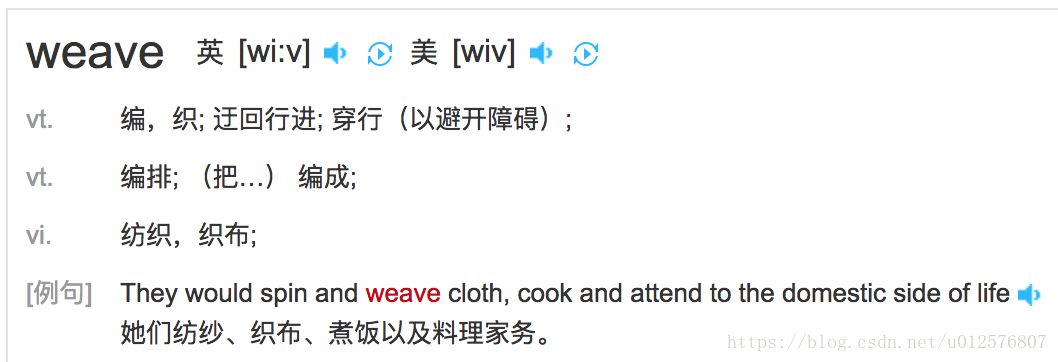

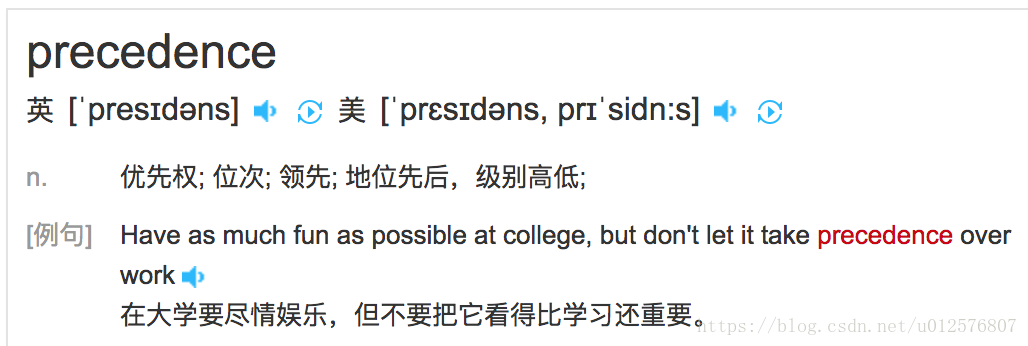
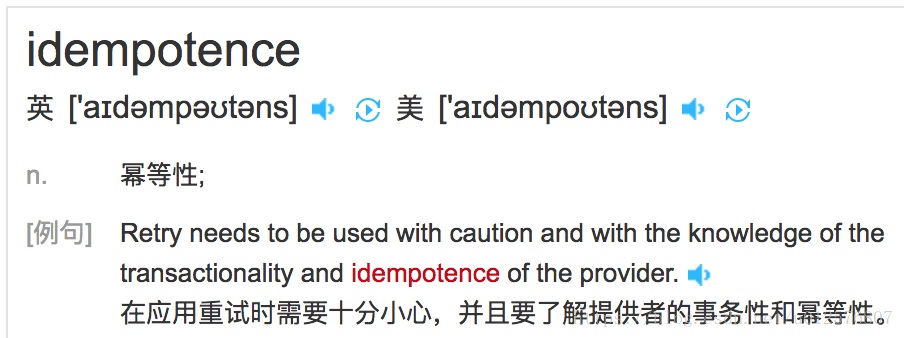




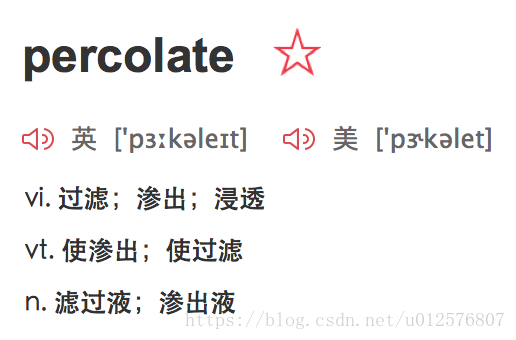


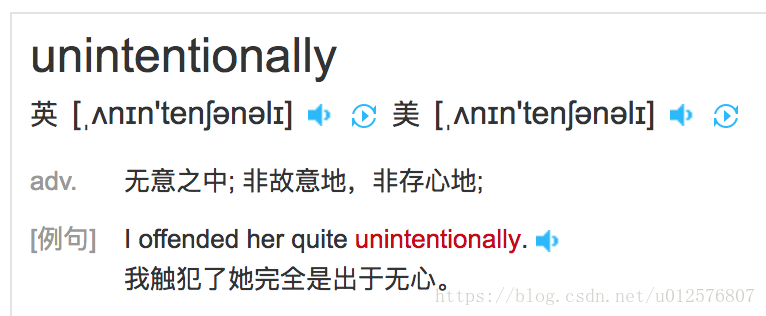
















 1014
1014

 被折叠的 条评论
为什么被折叠?
被折叠的 条评论
为什么被折叠?








